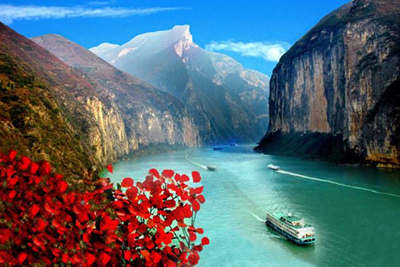Top Ten Famous Mountains in China
Table of Contents
- 1. Yellow Mountain in Anhui
- 2. Mt. Wutai in Shanxi
- 3. Mt. Hua in Shaanxi
- 4. Mount Tai in Shangdong
- 5. Mt. Emei in Sichuan
- 6. Mt. Lu in Jiangxi
- 7. Mt. Everest in Tibet
- 8. Mt. Wuyi in Fujian
- 9. Mt. Wudang (武当山) in Hubei
- 10. Mt. Changbai (长白山) in Jilin
When talking about the famous mountains in China, Chinese people usually refer to the Five Great Mountains and the Four Sacred Mountains of Buddhism. Most of them boast religious significance, of either Taoism or Buddhism; some have become the UNESCO World Heritage Sites. Here below you will find more details regarding these well-known mountains in China.
1. Yellow Mountain in Anhui
Of all the notable mountains in China, Yellow Mountain (黄山 or Huangshan in Chinese) is probably the most charming one, and known as the most beautiful mountain in China. Located in Aunhui Province of China, Yellow Mountain is famed for its wondrous pines, unique peaks, sea of clouds and hot springs. It also boasts abundant resources and great variety of zoological species. The beauty of the mountain varies with the seasons. It is designated as a World Cultural and Natural Heritage site.
- - The Welcoming Guest Pine, Flying Stone, and sea of clouds last for over 260 days.
- - The hot spring is for world-class.
- - the Mt.Huangshan winter snow initially inspires the Chinese ink-wash painting
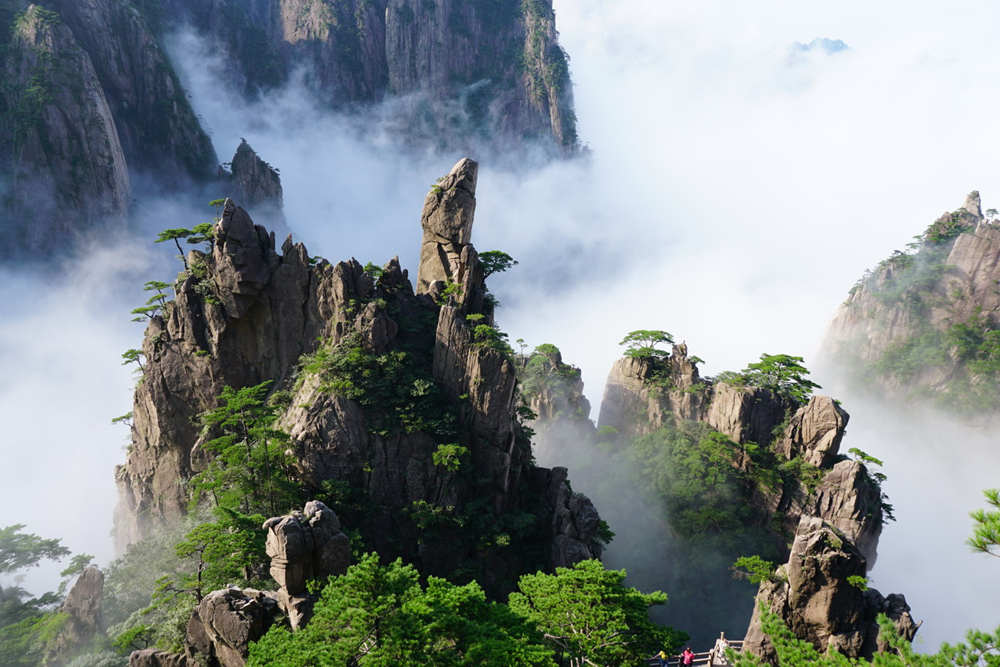
2. Mt. Wutai in Shanxi
Located in northeastern Shanxi province, Mount Wutai (五台山) is a holy land of Chinese Buddhism. It bears the name because of the five rounded peaks (North, South, West, East, Central). One of the most famous mountains in China and one of the four Buddhist mounain in China, Mt. Wutai is home to many of China's most important monasteries and temples, among which Foguang Temple and Nanchan Temple are the two oldest well-preserved wooden structures in China. In June 2009, Wutai Mountain was inscribed on the World Cultural Heritage List.
- - A perfect blend of Buddhist architecture and natural landscape
- - It is said to be the place where Manjushri, the God of Wisdom, manifested himself.
- - There are 47 temples in existence. Among them, Hin Tong Temple was built in the Eastern Han Dynasty and is the second oldest temple in China.
3. Mt. Hua in Shaanxi
Mt. Hua (华山) is known as the most precipitous mountain in the world and the highest one among the Five Great Mountains (五岳) in China. Besides its majestic breath-taking crags, steep paths, beautiful scenery, deep and narrow creeks, Mt. Hua is also the holy land of Taoism where emperors made pilgrimages in the past. The Cloister of the Jade Spring is the most reputable temple at the foot of the mountain.
- - A Taoist holy place with more than 20 Taoist temples
- - There are more than 200 days of sunrise and sea of clouds throughout the year
- - The Chengkong Trail is known as “the world's top ten scary trail”
- Best Time to Travel: April to May and September to November
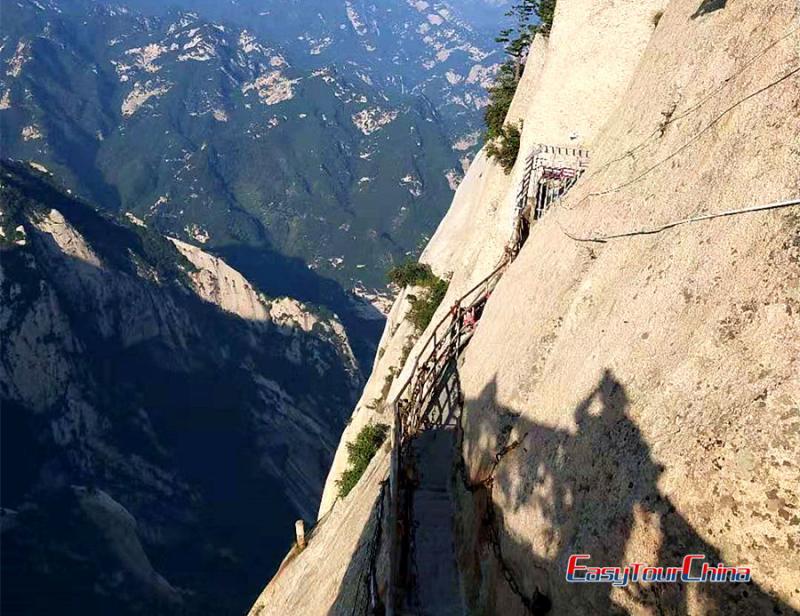
4. Mount Tai in Shangdong
Regarded as the foremost of the Five Great Mountains in China, Mount Tai (泰山) is a mountain of historical and cultural significance. It is a place of imperial worship culture and served as one of the most important ceremonial sites. About 80% of its area is covered with vegetation of almost 1,000 species. Towering with 1545m (5,069 ft), Jade Emperor Peak is the tallest peak of Mount Tai. Mount Tai has been recognized as a World Natural and Cultural Heritage Site by UNESCO.
- - Since ancient times, it has been said that when Taishan is at peace, the country is stable.
- - 72 emperors sacrificed to heaven here, including Qin Shi Huang.
- - More than 1,800 ancient stone tablets are preserved. Dynasty and is the second oldest temple in China.
5. Mt. Emei in Sichuan
Mount Emei (峨眉山) is a famous sightseeing attraction and one of the sacred mountains of Buddhism standing in the southwest of Sichuan Province. Seen from a distance, the jagged mountain of Emei looks like a girl's eyebrows, hence the name. The Golden Summit gathers the most famous spectacles, which are Sunrise, Clouds Sea, Buddha’s Aurora and Saint Light. Mt. Emei was made a UNESCO World Heritage Site in 1996.
- - The perfect blend of Buddhism, Taoism, martial arts and camellia culture.
- - Four wonders: sunrise, sea of clouds, Buddha's light, and the holy lights
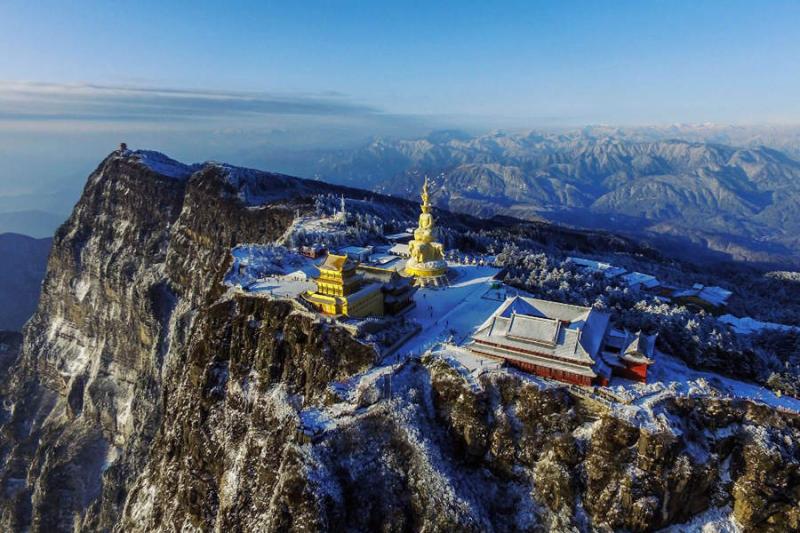
6. Mt. Lu in Jiangxi
As one of the most famous mountains in China, Mount Lu (庐山) is spectacular with some 100 peaks being veiled in mist for 191 days annually on average. Widely known for its grandeur, steepness, and beauty, Mount Lu is also home to the world famous lu shan tea. What’s more, Mount Lu is reputed as a perfect summer resort, owning to its particular coolness in the summer.
- - Sanliuquan Spring is the “biggest wonder of Mount Lu”, with a drop of 155 meters.
- - 191 days of fog per year, perfect for photography
- - UNESCO describes it as “the spiritual habitat of Chinese civilization”.
7. Mt. Everest in Tibet
Mt. Everest is definitely one of the most famous and coolest mountains in China. In 1865, Everest (珠峰) was given its official English name by Andrew Waugh, a surveyor from the British Royal Geographical Society. Stood in southern Tibet, Mt. Everest is the highest mountain in the world with a height of 8,848 m above sea level. Its body resembles the shape of a pyramid and its peak stabbed the sky.
The golden period for mountain goers to visit Mt. Everest is from April to June. It is a Mecca for mountaineers, and every year hundreds of them are here and try to conquer the highest peak of the world.
- - A sacred place for explorers, one of the ultimate goals of mountaineers
- - A holy mountain for both Tibetans and Nepalese.
- - Photography for highland scenery, glaciers, snow-capped mountains, starry skies and sunrise
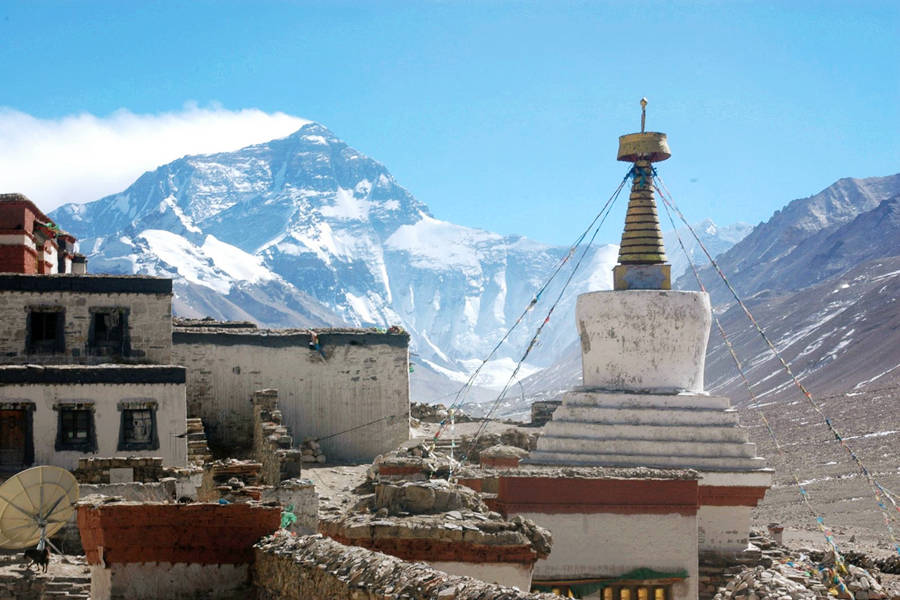
8. Mt. Wuyi in Fujian
Isolated from the outside world by streams and ravines, Mt. Wuyi (武夷山) is often called the "number one scenic wonder in Southeast China”. It is the most outstanding biodiversity conservation zone of Southeast China and the most representative example of Chinese subtropical forests. Numerous types of tea are produced around Mount Wuyi, such as Da Hong Pao tea and Lapsang souchong. This China mountain was inscribed into the list of World cultural and natural Heritage Sites in 1999.
- - The hometown of Wuyi rock tea (Da Hong Pao)
- - Tea culture, tea garden landscapes and mountains and waters are perfectly integrated
- - The birthplace of Zhu Xi's Neo-Confucianism
- - Unique Danxia landform
9. Mt. Wudang (武当山) in Hubei
As an old saying goes: "Shaolin Wushu (martial arts) is the best in the north of China, while Wudang’s ranks top in the south." Located in Shiyan in western Hubei, Mt. Wudang is both a famous scenic spot and a holy mountain of Taoism in China. It represents the highest standards of Chinese art and architecture over a period of nearly 1,000 years. Noted temples include the Golden Hall, Nanyan Temple and the Purple Cloud Temple. In December 1994, the ancient architectural complex of Wudang Mountain was inscribed on the World Heritage List.
- - An important birthplace of Taoism in China and one of the most famous Taoist sacred places
- - The birthplace of Wudang martial arts
- - It boasts a grand complex of ancient buildings from the Ming and Qing Dynasties, which blend perfectly with the natural landscape
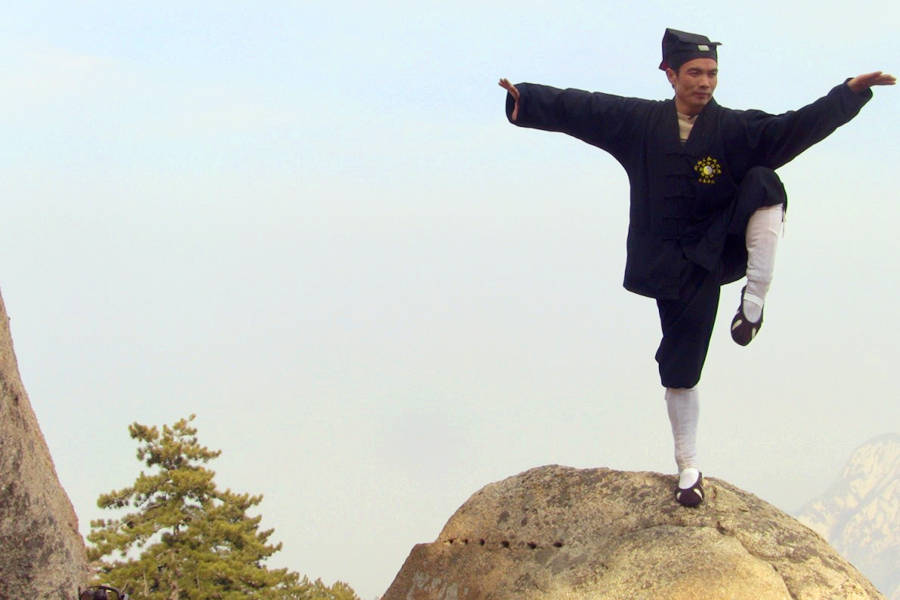
10. Mt. Changbai (长白山) in Jilin
The name Changbai literally means "Perpetually White Mountain " in Chinese. The rugged terrain of Mt. Changbai provides shelter for many rare animals, such as bears, and Siberian tigers, making it one of the best national parks in China. There are innumerable hot springs and more than 1,500 species of plants distributing in the forests of the mountain. What’s more, Changbai Mountain Nature Reserve was involved in the UNESCO's "Man and Biosphere" program in 1980 and becomes part of the world's biosphere reserves.
- - Unique Volcanic Landscape
- - Changbaishan Tianchi is the highest crater lake in China.
- - Changbaishan is regarded as the birthplace of the Korean people.

